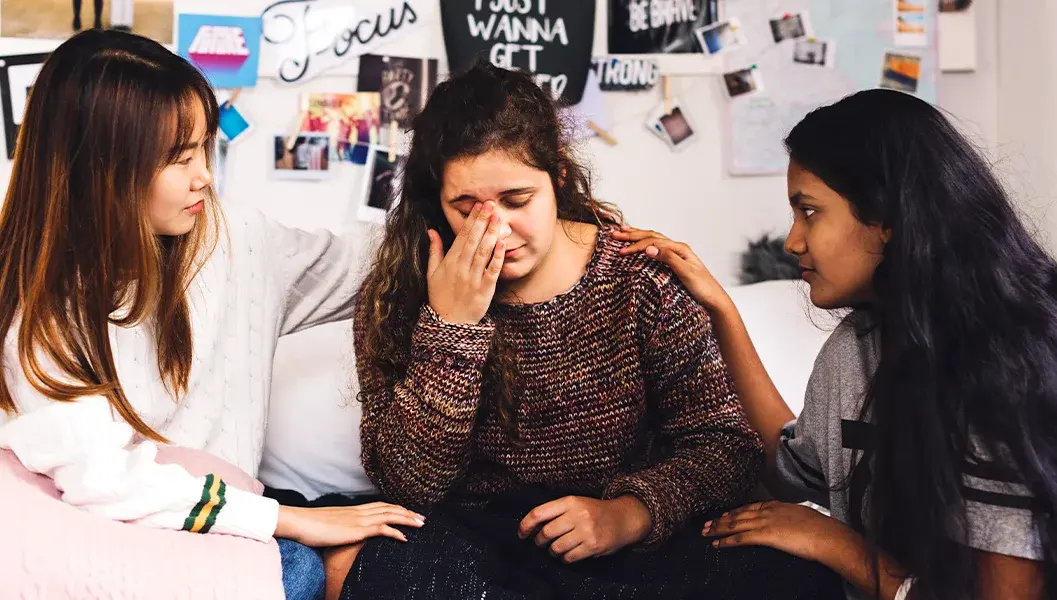How Many Teens Have Anxiety?

Did you know that being a teenager is one of the most challenging phases of a human’s life? In fact, it is characterised by confusion, annoyance, anxiety and a lack of clarity.
The biological and psychological changes erupting in the human body are the main reason behind anxiety in teens. It also leads to mental health problems in teens that must be sorted out on time, or else it can end up costing individuals lifelong challenges.
As per the National Institute of Mental Health, around 31.9% of adolescents deal with anxiety disorders. In this article, we shall talk about how many teens have anxiety and how it can be dealt with.
Anxiety and Psychology
As per psychology, it is a complex interaction of social, psychological and bodily factors. The brain is perpetually active and responds to uncertainty and danger extensively. The constant fear of the future gets worse over time.
What Causes Anxiety In Teens?
A variety of reasons in teens cause anxiety. Some of them are as follows:
- A natural sensitivity to threat
- Genetic predisposition towards anxiety
- Extensive social comparison
- Sleep disruption owing to academic pressure
- Poor diet, especially the consumption of a lot of caffeine
How To Help A Teen With Anxiety?
Here are some ways to help a teen with anxiety.
Accepting and Validating The Problem
Most of the time, the adults tend to overlook the symptoms of anxiousness among teens. The first rule to help an individual with anxiety is to accept their struggles and validate them. When a teen feels heard, their path towards recovery is accelerated automatically.
Offering Supportive Lifestyle Adjustments
Some of the major culprits of an anxious life are a harmful lifestyle. By bringing the right kinds of adjustments to life, things can get much better. As parents, implementing positive changes in lifestyle, including avoidance of junk food, consumption of a healthy diet, removal of excessive usage of screens and a regular sleep pattern, can be of great help to the teens.
Encouraging Open Communication
Teens with anxiety want to be heard! At home or in school, encourage open communication so they can actually discuss their worries with you with confidence and without inhibitions.
What Percentage Of Teens Have Anxiety, and How Common Is Anxiety In Teens?
The National Institute of Mental Health says that as many as 32% of adolescents in the United States of America aged 13-18 suffer from anxiety. In fact, this percentage is increasing with the passage of time at an alarming rate and has become relatively common amongst the teens.
Anxiety Symptoms In Teens
Teens showcase more or less the same anxiety symptoms as adults. These include:
A. Never-ending worries about school and social life
B. Consistent negative thoughts
C. Sweating and nervousness before a big event
D.Avoidance of social behaviours
E. Sleep disorder
F. Irritability and annoyance towards new developments in life and surroundings
Anxiety Medication For Teens
The primary mode of action taken up by anxiety medication for teens is that they augment the levels of serotonin in the body. It is basically a brain chemical that regulates the mood. However, it is always recommended to try out therapies before resorting to anxiety medicines.
Helping Teens With Anxiety
Helping teens with anxiety on time is necessary and since it is treatable, Saalvio offers exceptional teen therapy plans through which individuals can consult with certified mental health specialists and regulate their emotions skillfully.
Final Thoughts
The growing number of teens who have anxiety calls for quick action. The startling answer to ‘How Many Teens Have Anxiety’ in today’s time and date stresses the significant role of parents and teachers is crucial in this regard, as their acceptance and validation of teens’ feelings can really make a difference. Also, consulting with a child mental-health specialist and normalising help-seeking brings meaningful results.
Talk to a Licensed Therapist
Connect with certified professionals who are here to listen and guide you through life’s challenges.


